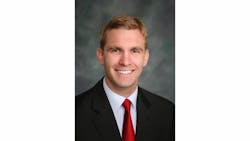I am an aviation professional.
I speak those words with pride. I repeat them to the mirror in the morning. I go to parties and pray new acquaintances will ask what I do. “I’m an aviation professional,” I say, then I sit back and let them imagine my flight jacket, long white scarf, and aviator sunglasses.
That’s the feeling, isn’t it? That’s what brought many of us to this work. Growing up, we tossed balsawood gliders around the back yard, tried to identify each plane streaking overhead, and dreamed of our future in the sky. I put countless babysitters to sleep as my favorite airshow video kept playing…and playing…and playing.
In a way, this passion is a collective weakness when it comes to developing the work force of the future. Aviation is “cool,” after all, so if we just throw open the doors the masses will come, right? Who wouldn’t want to spend their life doing this?
Well, something’s missing. We face a work force crisis from ground level to cruising altitude.
I just returned from my first meeting of ICAO’s Next Generation of Aviation Professionals (NGAP) task force. The group’s purpose is to ensure that enough qualified and competent individuals are available to operate, manage, and maintain the international air transport system. For two days, I marveled at the excellent work done on behalf of this industry’s future – diligent professionals dedicated to keeping the world safely in flight.
The existence of this body is a good thing, but it’s also a sign of the underlying problem. Aviation doesn’t sell itself to the extent I’d like to imagine; interest in it must be carefully cultivated and nurtured. To build a diverse, highly skilled work force we need to attract those who don’t find it naturally exciting just to drive by an airport.
Their passion can grow once they come through the door, but to get these workers inside will take effort. Manufacturers, operators, and maintenance providers must reach into their communities and lay the groundwork. Go to schools. Bring students to your facilities. Teach kids about lift and drag. You can’t start too early. Show them the runway and let them learn to take off.
The jacket, scarf, and sunglasses are optional.
Brett Levanto is the Director of Operations at Obadal, Filler, MacLeod and Klein, the Virginia-based law firm that manages both the Aeronautical Repair Station Association and the Aviation Technician Education Council. Visit the global aviation maintenance industry’s information portal at avmro.ARSA.org.
About the Author
Brett Levanto
Brett Levanto is vice president of operations of Obadal, Filler, MacLeod & Klein, P.L.C. managing firm and client communications in conjunction with regulatory and legislative policy initiatives. He provides strategic and logistical support for the Aeronautical Repair Station Association.

